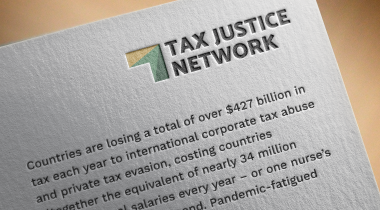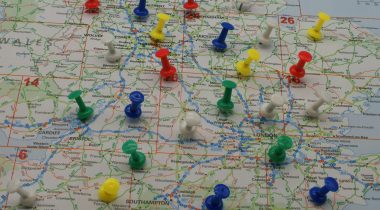
Andres Knobel ■ Pandora Papers and (South Dakota) trusts: Why do criminals and the rich like them so much?

The Pandora Papers is full of stories involving trusts, particularly South Dakota trusts. This short blog explains why trusts are so problematic and what we can do about it.
What is a trust?
Depending on the country, a trust may be considered an entity (similar to a company), a contract, an arrangement or just a relationship. Although lawyers and academics love to point to the nooks and crannies that set these classifications apart from each other, none of these distinctions are that important for understanding why trusts are so problematic from a transparency and justice perspective.
In essence, trusts involve a legal structure where a person (called the settlor) transfers assets to a trustee, who will hold the (trusted) assets under their name and manage them according to the settlor’s directions in favour of the beneficiaries appointed by the settlor. Why would anyone do this instead of giving the assets directly to the beneficiaries? The idea of trusts, which originated in England in the Middle Ages, is that for some reason the beneficiaries cannot or shouldn’t hold the assets yet, so it’s better for someone else, a trusted person, to manage and hold the assets on their behalf until they are ready to receive them. Based on this basic structure, trust enthusiasts commonly give the example of a responsible parent who sets up a trust to ensure that a trustee will take care of their vulnerable children after the parent (settlor) dies. This is a very noble goal, but there’s more to it.
Why are trusts problematic?
As explained in our paper “Trusts: Weapons of Mass Injustice?”, although trusts can indeed be used to protect beneficiaries who are sick and vulnerable, nothing in the law actually requires this. Instead of helping those in need, the trust beneficiary could turn out to be a person convicted of sexual abuse against a minor or a person convicted of murder. In addition, depending on the country where the trust was created, all these different parties (the settlor, the trustee and the beneficiary) do not necessarily need to be different people. Rather, they could just refer to the same person, or alternatively may be under the control of the same person.
Trusts are especially problematic for two reasons. First, their secrecy. Second, their capability to shield assets from the rest of society (tax authorities, victims of sexual abuse or murder or fraud, etc).
- Secrecy
Unlike companies and other legal persons which need to incorporate and register with the commercial registry in order to exist, trusts usually require no such registration. For this reason, there’s no way of knowing how many trusts exist in the world, let alone how many assets they hold or who the people are that are behind them. While some countries require some trusts to register (eg the EU) and individuals may have reporting obligations to tax authorities if they are subject to tax, not all types of trusts are covered. Even for those which are covered, enforcement is very problematic given that no one may know that the trust exists in the first place. In many cases, the only way the public becomes aware of them is through leaks such as the Panama or Pandora Papers, or via media coverage of divorce cases of multimillionaires.
Even countries that require (some) trusts to register tend to allow trusts to enjoy more secrecy, compared to companies and other legal persons. For instance, while the EU 5th anti-money laundering directive requires public access to companies’ beneficial ownership information (the natural persons who ultimately own or control the companies), in the case of trusts access is limited only to those with a ‘legitimate interest.’
In addition to not requiring all trusts to register, countries may fail to obtain information about all the relevant people involved in a trust. While companies tend to have very simple structures encompassing just shareholders with the same voting rights, trusts involve many parties. The three parties in a classic trust setting (the settlor, trustee and beneficiary) can involve many more: a legal (nominee) settlor, an economic settlor (the real owner of the assets to be transferred), the trustee, a protector or enforcer, a beneficiary who may be determined, discretionary or anyone belonging to a defined “class”. Trusts can now just have “purposes” (eg to concentrate family wealth) instead of beneficiaries. What’s more, many of these parties may themselves be legal persons (eg a corporate trustee, a corporate protector) making it even harder to determine who is behind the trust and who is in control of it.
Trusts are therefore often used to integrate more complexity into the ownership structure of a company or asset (eg a house) in order to create more secrecy around its real owners. Institutions like the World Bank, the Financial Action Task Force (FATF) and the Egmont Group suggest that the involvement of trusts in major corruption or money laundering scandals may be underestimated because trusts are so complex that authorities don’t bother to take action against them (assuming they even know about them).
The StAR (World Bank/UNODC)’s “The Puppet Masters” reports (p. 45-46):
Investigators interviewed as part of this study argued that the grand corruption investigations in our database failed to capture the true extent to which trusts are used. Trusts, they said, prove such a hurdle to investigation, prosecution (or civil judgment), and asset recovery that they are seldom prioritized in corruption investigations. Investigators and prosecutors tend not to bring charges against trusts, because of the difficulty in proving their role in the crime… As a result, even if trusts holding illicit assets may well have been used in a given case, they may not actually be mentioned in formal charges and court documents, and consequently their misuse goes underreported.
The FATF/Egmont Group’s “Concealment of Beneficial Ownership” says (p. 34):
The interaction of the trust with other legal persons adds an additional layer of complexity and helps frustrate efforts to discover beneficial ownership… It is also possible that the use of legal arrangements may increase the difficulty of investigating and identifying the beneficial owner, thereby explaining their relatively low prevalence in the case study sample.
- Asset protection
Apart from hiding assets and owners’ identities, trusts can shield assets from everyone else even in cases where there is full transparency on the trust’s existence, the identities of their parties and the value of their assets. Unlike companies which merely grant “limited” liability, trusts may achieve full immunity thanks to what we call the “ownerless limbo”. On paper, it appears as if trust assets aren’t owned by anyone. The settlor would say: “I’m no longer the owner, I gave the assets to the trust/trustee”. The trustee would say: “I’m not the real owner, I merely hold and administer the assets in favour of the beneficiaries, but I cannot do as I want with assets nor are they a part of my personal wealth”. Finally, beneficiaries would say: “We don’t own the assets yet, they must first be distributed to us after X time”.
One of the special types of asset protection trusts are discretionary trusts, which suggest (on paper!) that the trustee has full discretion to distribute assets to beneficiaries, determining who will receive what, when, how much and even “if”. In other words, discretionary trusts allow beneficiaries to say “I’m so distant from owning the trust assets, because it’s not that I don’t own them yet, but I may never own them at all, unless the trustee uses their discretion to distribute anything to me”. This argument is used, and sometimes even endorsed by the OECD (p. 19) to justify not requiring the disclosure of “discretionary beneficiaries” – because they may end up not receiving anything at all.
Of course, reality may be very distant from what it says on paper, and all settlors and beneficiaries may be enjoying the assets (eg using the mansion, the yacht and the private jet). It’s only when someone else tries to get access to an asset that they are all able to hide behind the trust paper claiming no one actually owns it. Asset protection trusts are so effective, that they have shielded assets against the US tax administration (the IRS), and unfortunately even against victims of sexual abuse and murder.
Why South Dakota?
South Dakota has been actively promoting itself as the ideal jurisdiction of choice both for US Americans (so that they don’t go to set up trusts in some remote island) as well as for foreigners, eg actively promoting trusts to Latin American elites.
Many may prefer South Dakota over a small tropical island because it is in the US. Although the US ranks as the 2nd worst offender in the Tax Justice Network’s Financial Secrecy Index, most countries don’t consider the US to be a “tax haven”, affording a higher degree of perceived reputation to US trusts.
Although South Dakota is widely mentioned in the Pandora Papers, it would be naïve to consider that it is the only risky jurisdiction with regards to trusts. As described here, many jurisdictions such as the Cayman Islands (its STAR trust), the BVI (its Vista Trust), Belize, Cook Islands, Nevis as well as other US States (Nevada, Alaska) have been offering very abusive trust provisions. Apart from the lack of transparency (given that trusts are usually not required to be registered in most places, let alone give public access to that information), many of these jurisdictions offer legal frameworks that ensure or allow for, among others:
- non-recognition of foreign laws or foreign judgements (which may invalidate the trust, eg because of violating inheritance laws)
- flexibility on the duration of the trust ranging from 100 to 1,000 years or no time limit at all
- the possibility for the settlor to also be a trustee and/or beneficiary or to have sufficient powers to be able to control the trustee
- “spendthrift” provisions (which prevent trust distributions to indebted beneficiaries)
- limited time to initiate an anti-fraud action against a trust (eg in cases where it was indeed created to shield assets from a creditor) and increasing the burden of proof, demanding the victim proves beyond reasonable doubt that the only purpose of creating the trust was to defraud them.
Finally, the strategy of these trust jurisdictions is that victims and defrauded creditors would have to file lawsuits in many of these offshore jurisdictions or to spend a lot of time obtaining sufficient details about trusts that are often changing (the trust could in many cases migrate to other jurisdictions, change trustees, etc.). This would discourage even starting investigation or legal action where a trust is involved.
What can we do about it?
Countries should:
- Establish public online registries of the beneficial owners of trusts (eg. Denmark), covering any trust created according to local laws as well as any foreign trust with local assets or local parties (the settlor, trustee, etc)
- Neutralise the “ownerless limbo” by considering that trust assets are always owned by the settlor, until trust assets were distributed to beneficiaries (who would then become their owners). In other words, if a settlor has creditors and claims to have no money to pay the debt, creditors should be able to get hold of the trust assets as part of the payment.
- Establish lists of jurisdictions with abusive trust regimes (eg based on their secrecy and asset protection provisions) and prohibit residents from being connected to trusts from these jurisdictions, or disregard by considering invalid any of those trusts operating in the local territory or holding assets.
Related articles
One-page policy briefs: ABC policy reforms and human rights in the UN tax convention

The “millionaire exodus” visualised
The millionaire exodus myth
10 June 2025

The Financial Secrecy Index, a cherished tool for policy research across the globe

When AI runs a company, who is the beneficial owner?
Insights from the United Kingdom’s People with Significant Control register
13 May 2025

Uncovering hidden power in the UK’s PSC Register

New article explores why the fight for beneficial ownership transparency isn’t over
Asset beneficial ownership – Enforcing wealth tax & other positive spillover effects
4 March 2025


